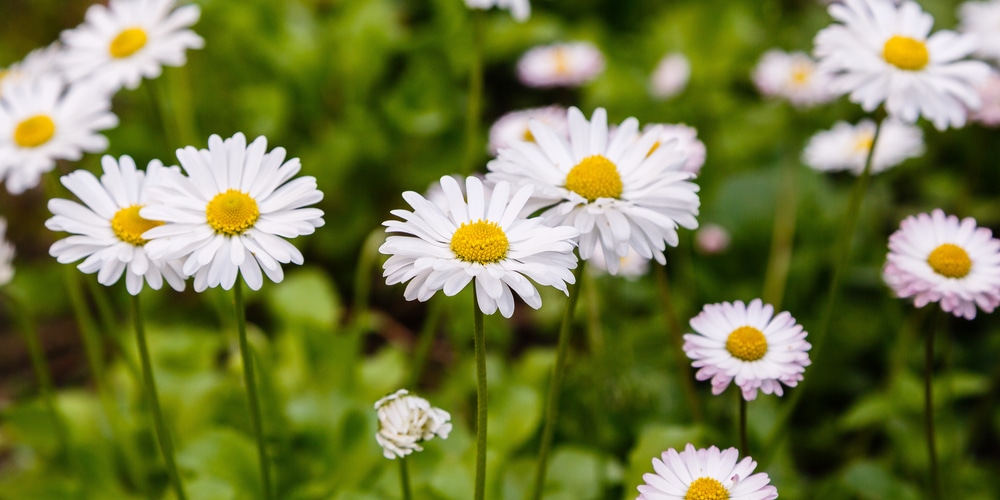The English Daisy is a cheerful little plant that has been gracing gardens for centuries. Also known as the Bellis perennis, this perennial flower is native to Europe and Asia. It belongs to the Asteraceae family, along with sunflowers, asters, and chrysanthemums.
In some parts of the world, these flowering plants are even considered to be weeds and can quickly invade an area if left unchecked. However, some gardeners see the potential in using English Daisies as ground covers.
How to Grow English Daisies as Ground Cover
Also referred to as lawn daisies, they are quite low-maintenance and will flower generously from spring to summer if given enough sunlight. With the right growing conditions, it is possible to create a stunning floral display with English Daisies.
Plus, they are relatively easy to propagate from seed. So, if you’re looking for a cheerful ground cover that is also low-maintenance, the English Daisy may be the plant for you.
However, if you’re thinking of growing these daisies as ground cover, there are a few things that you have to remember:
Prepare the Soil
Lawn daisies prefer slightly acidic soil with a pH level of around six. They also need well-drained soil that is rich in organic matter. Although low maintenance, these plants still need to be fertilized regularly. Organic compost or manure is perfect for this.
Apply a pre-emergent herbicide in early spring to prevent weed seeds from germinating. You can also use a mulch to help keep the weeds at bay and improve moisture retention in the soil.
Sunlight Requirements
During the spring and summer, English Daisies need at least six hours of sunlight each day. These plants love the sun and will reward you with an abundance of flowers if they are given enough light.
Watering Needs
Lawn daisies are quite drought-tolerant once they are established. However, during the first few weeks after planting, they need to be kept moist. Once a week should be sufficient unless there is a heatwave or prolonged period of dry weather.
Before watering, dig your finger two inches deep. If it’s dry, it’s typically a good sign that it’s time to water your lawn daisies. Otherwise, wait it out for another day or two and check again before watering.
Don’t Plant with Other Flowers
If you’re planning on planting them as ground cover, it’s best not to plant English Daisies with other flowers. This is because they can quickly smother out other plants.
Deadhead to Encourage More Blooms
To encourage more flowers, it’s important to deadhead the plants regularly. This involves removing spent blooms and seed heads. Not only does this improve the plant’s appearance, but it also encourages them to produce more flowers.
Temperature Needs
Although perennials, English daisies may grow as annuals in areas with scorching summers. This is because they go dormant during periods of extreme heat and will only reemerge once the temperatures start to cool down again.
According to the USDA, lawn daisies usually are biennial or perennial in Zones four through seven. For these English daisies to perennialize, certain conditions must be met, such as vernalization or cold treatment that signals to the plant that winter has passed. Once the plant experiences this, it will then flower the following spring.
However, in USDA zones eight or above, English daisies should be treated as annuals. Temperatures in these areas can get too hot for the plant to survive, and they will not flower in the second spring. With that being said, choosing a different ground cover if you’re outside zones 4-7 may be a better option.
If you still want them as ground covers, you can go for transplants during the fall. This will give the plants enough time to establish themselves before the hot summer months hit.
English Daisy Ground Cover: Final Thoughts
Depending on where you live, English Daisies can be grown as either annuals or perennials. These flowering plants are optimal for ground cover use within USDA zones 4-7. However, if you live in an area with very hot summers, looking for alternatives that can handle the heat better.
While English daisies are relatively low-maintenance, they still need some care to ensure that they thrive. 6 hours of sunlight, well-draining soil, and regular fertilization are some of the key things to remember.

